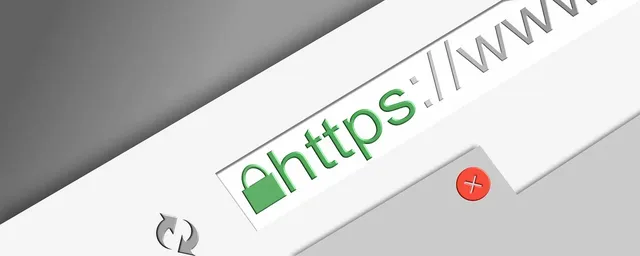Hi everybody...
How are you all in this community, I hope you are all healthy always and keep the spirit of living this life. Meet me again today and on this occasion I again want to share educational lessons with all of you, I hope you believe and will help us for a better life.
In this digital era, websites have a very important role. People can use it to search for information, to shop, or just to find entertainment. Based on data obtained from internetlivestats.com, there are about 1.8 billion online websites in the world every day.
As an internet user, of course, you must be familiar with popular websites such as Youtube, Dropbox, Pinterest, and many more. So, what exactly is a website? Here I will provide an explanation for all of you.
What is a Website?
A website is a group of World Wide Web pages that are located under one domain and contain a variety of content ranging from text, images, video, audio, or other media. A website is generally built for a specific purpose such as being a media for news, education, e-commerce, entertainment, or social networking.
To visit a website, you only need a device such as a desktop or smartphone, a URL link to the website address, a web browser, and an internet connection. You need to know, the main page of a website is the home page. So when you access the website URL, you will be directed to the home page. From this page, you will be able to explore the contents of other web pages such as opening the service page, contact page, or others.
Broadly speaking, the website has 3 main elements in it, namely:
- Domain
Domain is the address that will be accessed by users to open your website. Examples of domains such as: www.logique.co.id
- Hosting
Hosting is a place to store data on the website and placed on a server.
- Content
A website must also have content in it, be it text, videos, or images. Thanks to technological developments, there are now more and more Content Management Systems (CMS) to manage content on websites.
Website History
Tim Berners-Lee is a British scientist who developed the World Wide Web (WWW) in 1989, while working at CERN. The website was officially released in 1991. At that time, the website that was developed only displayed simple text without fancy fonts, images, or videos.
As revealed by web foundation.org, in October 1990, Tim wrote down three basic technologies that until now have become the foundation of the website, namely:
HTML or HyperText Markup Language is a markup language for website formatting.
URI or Uniform Resource Identifier is a kind of unique tool that is used to identify every resource on the web. URI are also commonly referred to as URL.
HTTP or Hypertext Transfer Protocol is a protocol that allows retrieval of linked resources from across the web.
In addition, Tim also wrote the first web page editor/browser (WorldWideWeb.app) and the first web server (httpd).
In late 1990, the first web page was released to the public. When the website began to develop, Tim Berners-Lee understood that the potential of the website would actually be realized if anyone could use it without having to pay a fee or ask for permission. So, at that time Tim suggested that CERN agree to make the base code available royalty-free. The decision was then announced in 1993 and ultimately sparked a global wave of creativity and innovation.
Website Functions
The main function of a website is as a medium of information for the public. With a website, you can easily share information or find information. If spelled out, here are the functions of the website:
- Become a communication medium.
Websites can be used to convey information. In general, websites that function as communication media will provide features such as email or chatrooms.
- Media for entertainment.
Website can also be a medium of entertainment. Various types of websites today can display features or content that entertains users such as online web games, live streaming, or others.
- Educational/knowledge media.
Apart from being a medium of communication and entertainment, the website can also be used to share knowledge or information. Currently, there are many websites that have been built with special niches that review various knowledge ranging from politics, technology, economics, or others.
- Media for business.
For the business world, the website can be used as a media for promotion, marketing, or media for conducting sales transactions. As technology advances, business owners must understand what a website is and its important function for the business.
Types of websites
To be able to understand what a website is in more detail, here we provide the types of websites that are commonly used today.
- Website E-Commerce
You must be familiar with this type of e-commerce website. Basically, an E-Commerce website is a website where people can make buying and selling transactions on it.
Currently, more and more businesses have decided to create an e-commerce web to facilitate customer transactions. In addition to benefiting customers, having an e-commerce website can also have a positive impact on companies such as:
The website allows customers to be able to shop 24 hours non-stop so that it can increase company profits.
The website can be reached by all customers in various regions of the world, which means that your products can be marketed without regional restrictions.
To recognize this type of website, in general, you can see the cart feature in it. In addition, e-commerce websites will usually provide payment options and product delivery.
- Business website
A business website is a website designed to represent the identity of a business online on the internet. This type of business website will generally display a logo, business profile, and the products or services they offer.
Nowadays, all types of businesses are expected to have a business web. Potential customers will generally search for information related to your business on Google and hope to find your business website in the search list. In this way, customers can find out more information about the company profile or the services offered so that the company can generate more new leads.
- Website Social Media
Besides being able to be operated through applications, social media can also be accessed through the website. Some examples of web social media are Facebook.com, Twitter.com, or Linkedin.com.
This type of website is used by users to communicate, interact, or share content with friends or family. Seeing the large number of social media users, many businesses also use this platform as a medium to market and promote products and interact with their customers.
- Website Portfolio
What is a portfolio website? As the name implies, a portfolio website is a site for displaying a work produced by a person or company. Artists, writers, designers, or photographers will usually create a portfolio website to showcase their work.
- Blog
Blogs can be considered as online journals or information pages with regularly updated content. This type of website will present the content in reverse chronological order. So, the latest content will be displayed at the top of the list.
The function of this blog site is basically to convey information in a more informal way. The topics of information or articles posted are quite diverse, such as information about technology, lifestyle, health, and much more.
One of the things that distinguishes blogs from other websites is that blog content can drive web visitor engagement. Through this website, readers or web visitors can provide comments or questions.
How to create websites
After knowing what a website is, its functions, and its types, you may be interested in knowing how to develop it. Here are some ways you can do to create a website:
- Using a website builder
A website builder is a tool that allows you to build a website very quickly. Usually these tools provide drag and drop features as well as design templates. Some examples of popular web builders used are Wix, Weebly, GoDaddy, and others.
- Creating a website with CMS
CMS or Content Management Systems is a platform for creating and publishing digital content. With this platform, you can use themes, plugins, or add-on features to create a website that meets your expectations.
- Using HTML and CSS
If you have the technical skills and knowledge, you can build your own website using Hypertext Markup Language (HTML) and Cascading Style Sheets (CSS). These two basic languages are used to create most websites.
If you are interested in developing your own web using HTML and CSS, then there are several tools you need to prepare such as a code editor, File Transfer Protocol (FTP), and a local development site.
Conclusion
The explanation above can help you to better understand what a website is. Basically a website is a collection of web pages that contain various information and can be accessed via the internet.
As a business owner, you will get many advantages by having a website such as to reach a wider target market and generate more profits. You don't need to worry about the website development process because now there are many web developer companies ready to help you.
My regards to:
@juzkid
@nattybongo




Nice post, thank sharing.
Downvoting a post can decrease pending rewards and make it less visible. Common reasons:
Submit
This is a full education that one will pay and receive in a classroom. You have given it to us for free here, on steemit. It is important you shared with us the advantages of websites as well. Keep sharing with us.
Downvoting a post can decrease pending rewards and make it less visible. Common reasons:
Submit